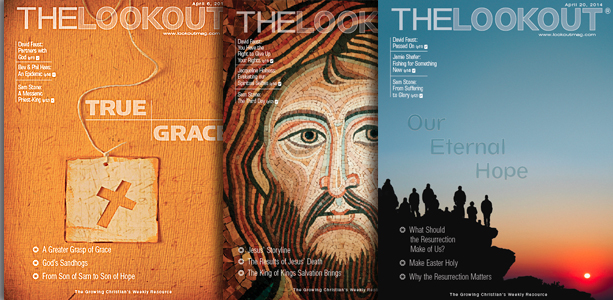By Sam E. Stone
 Chapters 42–53 of Isaiah contain what are called the “Servant Songs.” Isaiah 53 (perhaps the most familiar of them) is quoted six times in the New Testament. It describes not only the ministry of Jesus but his death and burial as well. The fulfillment of these very prophecies is noted in our lesson text taken from Luke 24.
Chapters 42–53 of Isaiah contain what are called the “Servant Songs.” Isaiah 53 (perhaps the most familiar of them) is quoted six times in the New Testament. It describes not only the ministry of Jesus but his death and burial as well. The fulfillment of these very prophecies is noted in our lesson text taken from Luke 24.
The Picture
Isaiah 53:3-8
J. A. Alexander wrote, “Notwithstanding these and other prophecies of the Messiah, he is not recognized when he appears (Isaiah 53:1) . . . His low condition, and especially his sufferings, make him rather an object of contempt (vv. 4-6) . . . .
Even they for whom he suffers may mistake his person and his office”
(v. 8).
Isaiah describes vividly the pain and suffering that the Messiah would endure. Jesus underwent not only physical mistreatment but also the low esteem in which he was held by the very people for whom he was ready to die. He took up our pain and bore our suffering. Details of the crucifixion are clearly described, such as his body being pierced for our transgressions. Later Peter explained that Jesus “bore our sins in his body on the cross, so that we might die to sins and live for righteousness”
(1 Peter 2:24).
When going through his trial, Jesus did not open his mouth. Like a sacrificial lamb ready to be offered, he said nothing in his own defense. He accepted mistreatment from his accusers, knowing full well what awaited him (Matthew 27:12-14). Isaiah’s prediction of what would occur was explained by Philip (Acts 8:30-35), who cited today’s text.
“The reason for his suffering would be misunderstood,” explained James E. Smith. “Most would think he suffered for some terrible crime or sin in his own life. Nothing could be further from the truth. His sufferings were vicarious and redemptive. Only through all that suffering could all the straying sheep be recovered. The our and his contrast in these verses is striking and moving.”
The Prophecy
Luke 24:25-27
Only Luke’s Gospel contains the account of two disciples, Cleopas and his friend, on the road to Emmaus (Luke 24:13-35). Lewis Foster observed that, at this point, Luke showed he can describe a scene in warm and sensitive detail. As Jesus began walking with the two, their downcast faces revealed the hopelessness felt by all of Christ’s followers after his death.
There is no indication that Jesus was in a glorified body. However the two disciples were kept from recognizing Jesus when he began walking along with them. The end of their temporary limitation of recognition is noted later (v. 31).
Jesus began by chiding them for their unwillingness to believe all that the prophets had taught for many years. Wasn’t the Messiah’s death necessary in God’s plan? “The very things about the death of Jesus that disturbed them so were the strongest proof that he was the Messiah of the Old Testament” (A. T. Robertson). Jesus taught them how the things that happened to him had fulfilled both what Moses taught in the Law and all that the Prophets later explained.
The two invited Jesus to stay overnight with them (v. 29). As they ate the evening meal together, Jesus “took bread, gave thanks, broke it and began to give it to them” (v. 30). At that moment “their eyes were opened and they recognized him” (v. 31).
The Promise
Luke 24:44-47
The verses not in our printed text (vv. 28-43) describe the thrill felt by the two disciples as they realized they had been in the presence of the risen Lord. Immediately they returned the seven miles to Jerusalem. There they found the Eleven and other disciples excited because of Peter’s report that he too had seen the resurrected Jesus. Suddenly, Jesus himself was present in the room with them. His presence confirmed the reports of the various ones who had seen him.
Jesus reminded them that not only had Moses and the Prophets foretold his death, burial, and resurrection, but he himself had as well (Luke 9:22, 44; 18:31). The Master Teacher clarified all that had happened and opened their minds so they could understand the Scriptures.
Lewis Foster pointed out that in Luke 24:47 “Luke is giving a brief summary of important words that will both conclude his Gospel narrative and be a connecting link to introduce his second volume (Acts), which will follow shortly.”
Sam E. Stone is the former editor of Christian Standard. He continues his writing and speaking ministry from his home in Cincinnati, Ohio.



Comments: no replies